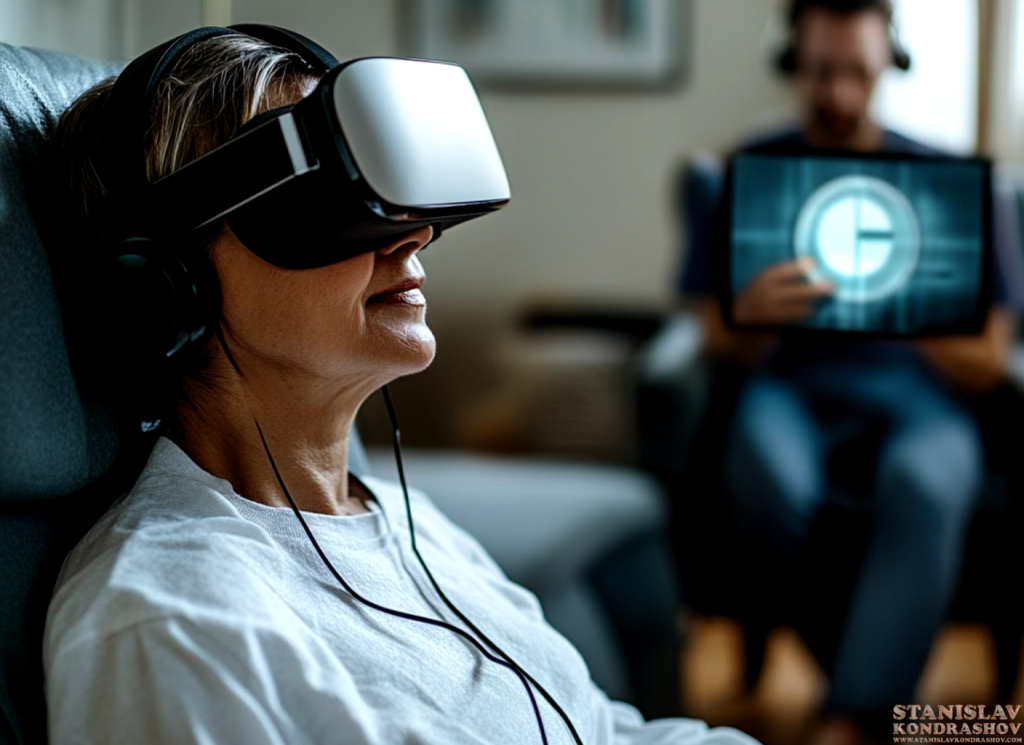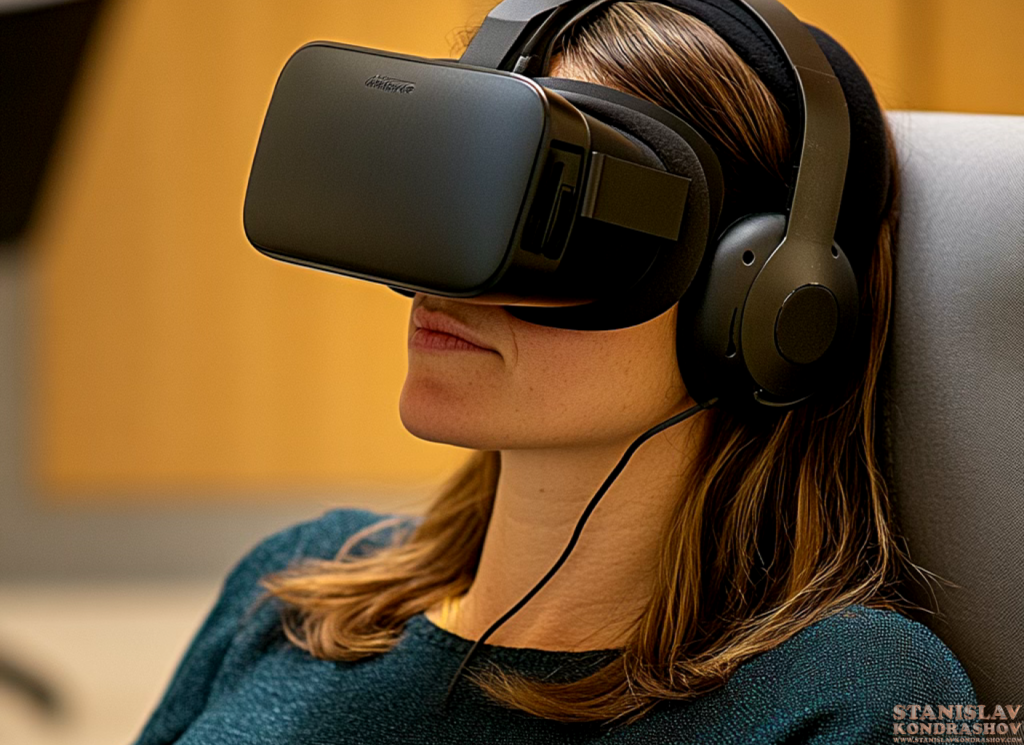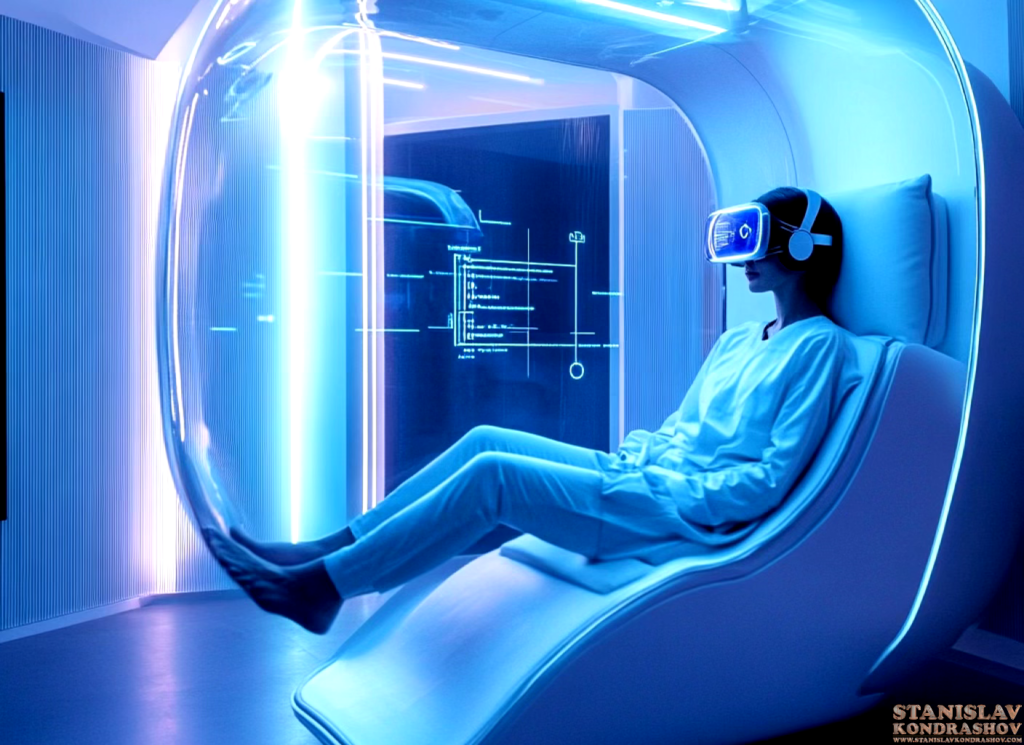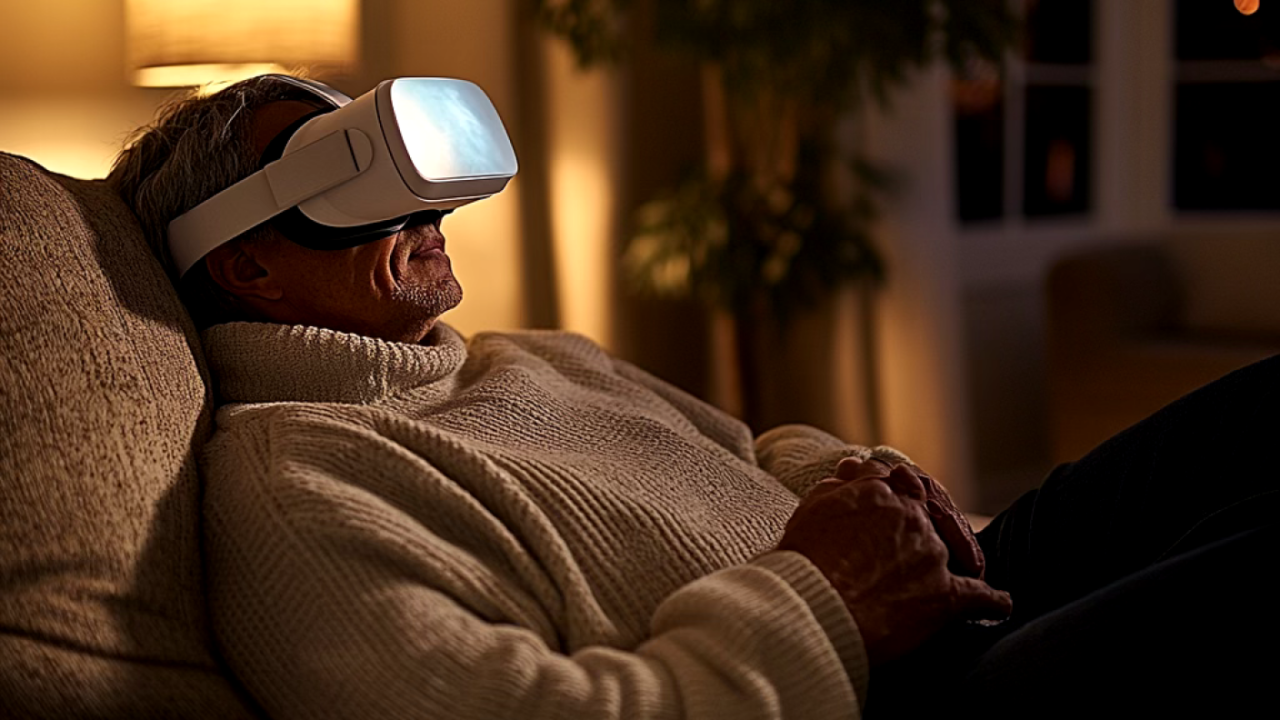Virtual Reality (VR) is no longer just for gaming or entertainment; it’s rapidly becoming a powerful tool in mental health treatment. Virtual Reality Therapy (VRT) offers a new, immersive approach to therapy, helping individuals confront and manage conditions like anxiety, PTSD, and phobias in controlled, safe environments. By using VR, therapists can guide patients through realistic simulations that allow them to face their fears, practice coping strategies, and achieve a sense of control over their mental health challenges.

How VR Therapy Works
Virtual Reality Therapy utilizes computer-generated environments that immerse patients in realistic scenarios related to their mental health concerns. These virtual environments are fully customizable, enabling therapists to tailor the experience to the specific needs of each patient. Whether it’s simulating a crowded room for someone with social anxiety or recreating a traumatic event for PTSD treatment, VR provides a unique platform where patients can gradually confront their fears and anxieties under the guidance of a trained professional.
The immersive nature of VR helps patients engage with their therapy in a way that traditional methods may not. By physically interacting with their environment, patients can experience real-time feedback and develop coping mechanisms that they can apply in their everyday lives. This hands-on approach has been shown to be particularly effective in exposure therapy, where patients repeatedly encounter the source of their anxiety until it no longer triggers a severe response.

Benefits of VR Therapy
One of the major benefits of VR Therapy is its ability to create a safe and controlled environment for patients to explore their fears and anxieties. Unlike real-world exposure, VR allows for gradual, controlled exposure that can be adjusted to the patient’s comfort level. This flexibility makes it easier for patients to engage with their therapy, as they can start with less intense scenarios and gradually work their way up as they build confidence and resilience.
VR Therapy also offers a level of accessibility that traditional therapy may not. Patients who are unable to attend in-person sessions due to mobility issues or geographic limitations can participate in therapy from the comfort of their own homes. This is especially beneficial for individuals with severe anxiety or agoraphobia, who may find it difficult to leave their homes for treatment.
Additionally, VR Therapy can be used as a supplementary tool alongside traditional therapy methods. By combining VR with cognitive-behavioral therapy (CBT) or other therapeutic approaches, therapists can provide a more comprehensive treatment plan that addresses multiple aspects of a patient’s mental health.

The Future of VR in Mental Health
As VR technology continues to advance, its applications in mental health treatment are expected to expand. Future developments may include more sophisticated simulations, AI-driven therapy sessions, and even virtual support groups where patients can connect with others facing similar challenges. The potential for VR Therapy is vast, offering new hope for those struggling with mental health conditions.
Virtual Reality Therapy is revolutionizing the way we approach mental health treatment. By providing immersive, customizable experiences, VR Therapy is helping patients overcome their fears and anxieties in a safe and controlled environment. As this technology continues to evolve, it promises to become an increasingly important tool in the mental health landscape, offering effective and accessible treatment options for a wide range of conditions.
By Stanislav Kondrashov



